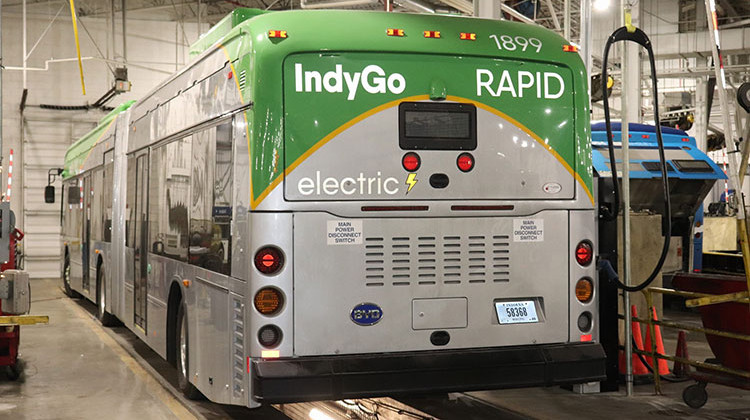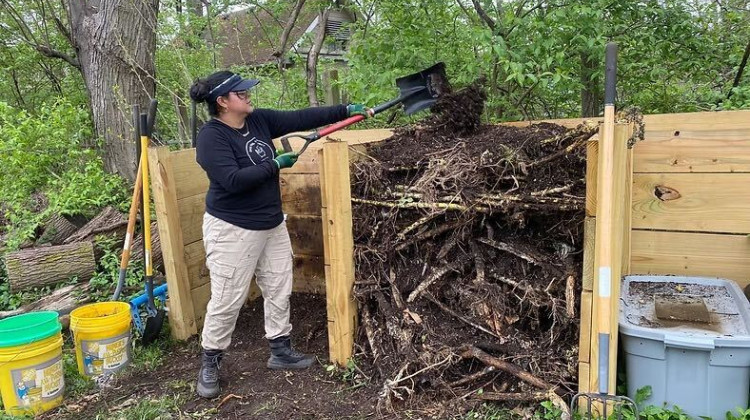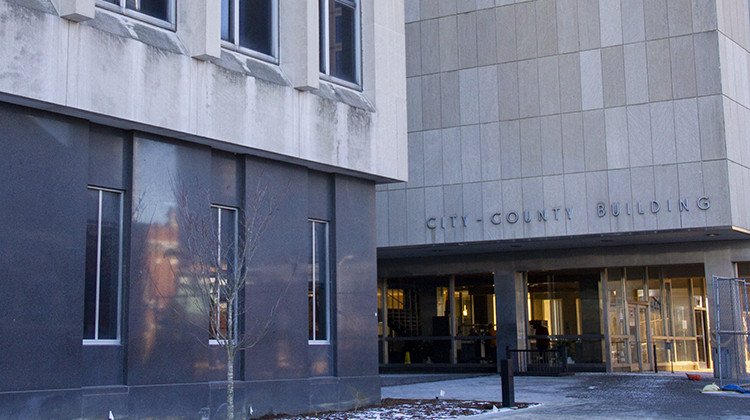
IndyGo worked with electric bus maker BYD to develop a way to charge the buses using wireless technology.
Courtesy IndyGo via FacebookLast fall, IndyGo began testing its electric buses for the Red Line and found the batteries did not last long enough to travel 275 miles on a single charge, the distance promised in a contract with the maker of the electric buses, BYD.
Outdoor temperatures caused the batteries to drain faster, even though they were supposed to be able to go 275 miles at 0 degrees outside.
IndyGo worked with BYD to find a solution — charge the buses using wireless technology, something becoming common with electronics like cell phones.
IndyGo Vice President of Public Affairs, Bryan Luellen, says IndyGo is not the first agency to use electric buses or wireless charging, but they are the first to use them together for a rapid transit project.
“It is a great way to give the buses the boost that they need to make sure that they can stay out and maintain the 10 minute service for 20 hours a day,” says Luellen.
Buses will be charged wirelessly during the day for 10 to 20 minutes at three locations near the routes and will be plugged in at night at the IndyGo garage. The locations have not been chosen yet.
During tests this spring, the buses traveled at or above the required 275 miles on a single charge.
The Red Line will open in September and will run from Broad Ripple through downtown Indianapolis to the University of Indianapolis. An app to pay for rides will launch in August, but rides will be free for the first few weeks after opening.
 DONATE
DONATE







 Support WFYI. We can't do it without you.
Support WFYI. We can't do it without you.